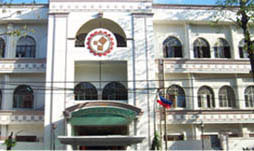Trivia about the Technological University of the Philippines
Established in 1901, the Technological University of the Philippines, now in its Centennial Year, marks its influence of one hundred years on national and global concerns.
Technological University of the Philippines was first known as the Manila Trade School which later became the Philippine School of Arts and Trades (PSAT). On June 17, 1959 the PSAT was converted into the Philippine College of Arts and Trades (PCAT) under RA No.2237. After 19 years, the college was elevated into the Technological University of the Philippines by virtue of PD No. 1518 on June 11 ,1978.
The widespread effects of TUP leadership and excellence are seen in TUP’s quality outputs of graduates of vocational, industrial, technological and professional fields; its significant linkages with industry thereby bringing to fore student involvement in many phases of work and industrial endeavors; its quality instruction given by faculty who are experts in their areas of discipline; its selection as university to respond to the needs of poor but deserving students in a MOA with Malacanang Palace and President Gloria Macapagal- Arroyo (2001); its pronounced expertise manifested in its board passers in the fields of engineering, architecture and teacher education; and its science and technology impact on various university concerns and external involvements.
As a university, TUP is tasked with the provision of higher and advanced vocational, industrial, technological and professional education and training in the industries. It shall provide progressive leadership in applied research and development studies for the advancement of technology, It shall effect technology transfer in the countryside to assist small and large scale industries.
TUP is a system comprising four campuses. The main campus of the university is TUP in Manila. It is located along Ayala Boulevard corner San Marcelino St., Ermita, Manila. lts three other campuses are: TUP in Taguig; TUP in Cavite; and TUP in the Visayas.
Ronald P. Gleason was the first principal (1901-1904) of the school; J.J. Eaton was the first superintendent (1905-1906); and Gregorio J. Sevilla was the first Filipino superintendent (1936-1939); ln 1959, Jose S. Roldan became the first president of the Philippine College of Arts and Trades (PCAT) (1959-1961); Dr. Jose R. Vergara was the third president of PCAT and the first President of the Technological University of the Philippines (TUP) (1968-1988). Then, Dr. Frederick So. Pada became the second president of TUP (1988-2000); Dr. Bernardo F. Adiviso third president (Aug. 1-16, 2000); and now Dr. Fedeserio C. Camarao is serving as the fourth TUP president (2001 to date).
lndeed, the Technological University of the Philippines, as the flagship of technological education, has created significant landmarks of excellence. One hundred years of a centennial glow of sparks of a forerunner in science and technology reflect the far reaching effects of TUP leadership. The imprints created by TUP have ceftainly met with the expectations of Time.
Stamps featuring the Technological University of the Philippines


Recent Comments